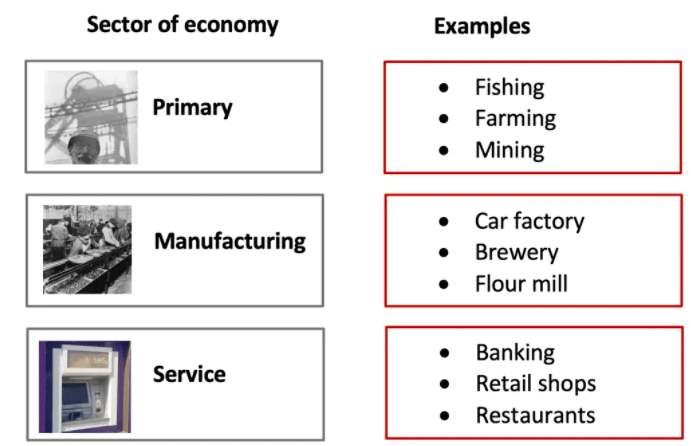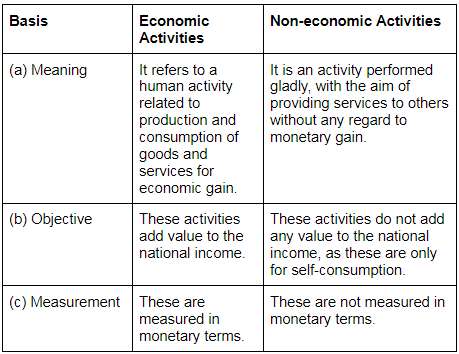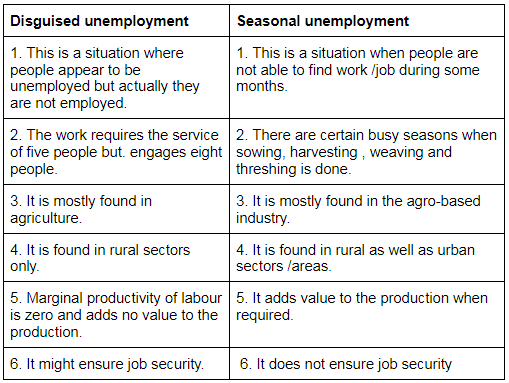Ans:
- People can make the best use of nature to create more resources when they have the knowledge, skill and technology to do so.
- This is why human beings are considered a resource. It is the abilities of human beings which help in transferring physical material into a valuable resource.
- ‘People as a resource’ is a way of referring to a country’s working people in terms of their existing productive skills and abilities.

- The idea of people as a resource is linked to the concept of human capital—i.e., the stock of skill and productive knowledge embodied in a population.
- Any production of goods and services requires the presence of the four factors of production, namely land, labour, physical capital and human capital.
- The knowledge and enterprise provided by the human capital put together the other three factors to produce an output.
- The population becomes an asset instead of a liability when investments are made in the form of education, training and medical care.
Q2. How is human resource different from other resources like land and physical capital?
Ans: Human resource is different in the following ways:
- Land and other resources are fixed, limited and specified, whereas human resources can be nurtured through education and health.
- Human resources can bring a change in other resources, whereas other resources can not change or affect a human resource.
- Human resource can make use of land and physical capital, whereas land and physical capital can not become useful on their own.
Q3. What is the role of education in human capital formation?
Ans: The role of education in human capital formation is as follows:
- Educated people earn more than uneducated people.
- A literate population is an asset to an economy.
- It leads to higher productivity.
- It opens new avenues for a person.
- It provides new aspirations and develops values of life.
- It contributes to the growth of society.
- It enhances the national income, cultural richness and the efficiency of the governance.
Q4. What is the role of health in human capital formation?
Ans:
- Human capital refers to the stock of skill and productive knowledge embodied in a population.
- This skill and product knowledge are provided with the help of proper education and training.
- However, the benefits of education alone do not lead to the creation of human capital.
- A human population which is educated but unhealthy cannot realise its potential. An unhealthy population is a liability and not an asset.
- Hence, health is an indispensable basis for realising one’s well being.
Q5. What part does health play in the individual’s working life?
Ans:
- The health of an individual helps him to realise his potential and also gives him the ability to fight illness. An unhealthy individual is a liability to his place of work.
- The health of a person is directly related to his efficiency. As compared to an unhealthy individual, a healthy person can work more efficiently and with greater productivity.
Q6. What are the various activities are undertaken in the primary sector, secondary sector and tertiary sector?
Ans:
Primary Sector
- Comprises activities related to the extraction and production of natural resources.
- Agriculture, forestry, animal husbandry, fishing, poultry farming, mining and quarrying are the activities undertaken in this sector.
Secondary Sector
- Comprises activities related to the processing of natural resources.
- Manufacturing is included in this sector.
Tertiary Sector
- Comprises activities that provide support to the primary and secondary sectors through various services.
- Trade, transport, communication, banking, education, health, tourism, insurance, etc., are examples of tertiary activities.
Q7. What is the difference between economic activities and non-economic activities?
Ans:
Q8. Why are women employed in low paid work?
Ans:
- Education and skill are the major determinants of the earning of any individual in the market.
- Due to gender discrimination, women are generally denied education and the necessary skills to become worthy contributors to the national income.
- As a result, a majority of women have meagre education and low skill formation. This is one of the reasons why they get paid less than men.
- Also, the perpetuation of gender prejudices such as “a woman cannot do as much physical work as a man” put women at a disadvantage.
Q9. How will you explain the term unemployment?
Ans:
- Unemployment is a situation in which people who are able and willing to work at the going wages cannot find jobs.
- An individual is termed as unemployed if he or she is part of the workforce of a country, and is capable and willing to work for payment, but is unable to do so.
Q10. What is the difference between disguised unemployment and seasonal unemployment?
Ans:
Q11. Why are educated unemployed a peculiar problem of India?
Ans:
- If disguised unemployment characterises rural India, educated unemployment is a peculiar problem of urban India.
- This is the situation wherein a few youths with matriculation, graduation and post-graduation degrees are not able to find suitable jobs.
- The education system is such that even after about 18 years of education, a person can be termed unskilled.
- What this does is that a large number of unskilled educated youth get churned out of educational institutions year after year, but only a fraction of them are able to find suitable jobs.
- Among the remaining, some remain unemployed while others get employed in activities that seem inadequate as per their potential. This, in turn leads to the wastage of the huge amounts of resources that had been spent on educating them.
Q12. In which field do you think India can build the maximum employment opportunity?
Ans:
- Among the three sectors, India should look to build maximum employment opportunities in the manufacturing and services sectors.
- The agricultural sector is already over-burdened by manpower that is disguised as unemployed.
- So, the small scale manufacturing units and the service industry (like travel and tourism, health, education, communication, etc.) need to be encouraged and facilitated to generate employment.
Q13. Can you suggest some measures in the education system to mitigate the problem of educated unemployed?
Ans: Measures in the education system to mitigate the problem of the educated unemployed:
- Make education at the secondary level more career-oriented, which would endow individuals with not only education but also the requisite skills for gaining successful employment.
- Create a sort of screening process whereby each individual chooses subjects that suit his or her abilities.
- The introduction of newer subjects and fields of study at the school level should be accompanied by a growth of job opportunities in the sectors that would employ the students electing to study such subjects.
Q14. Can you imagine some village which initially had no job opportunities but later came up with many?
Ans:
- Rampur was a small village which initially depended on agriculture which was also dependent on rainfall.
- Then electricity reached the village and people could irrigate their fields and could grow 2 to 3 crops in a year and get work.
- Some people set up small scale industries which could be run by electricity and provided employment to people.
- A school was established and now the population started to become educated and as a result, they could seek employment in and outside the village.
- The village became prosperous and soon had better health, education, transport and job facilities.
Q15. Which capital would you consider the best - land, labour, physical capital and human capital? Why?
Ans:
- Human capital is the best capital because it can make use of the land, labour and physical capital.
- The other factors cannot become useful on their own.
- The knowledge expertise in a human enables him to develop land, labour and physical capital to produce an output for his own use or to sell in the market.

No comments:
Post a Comment